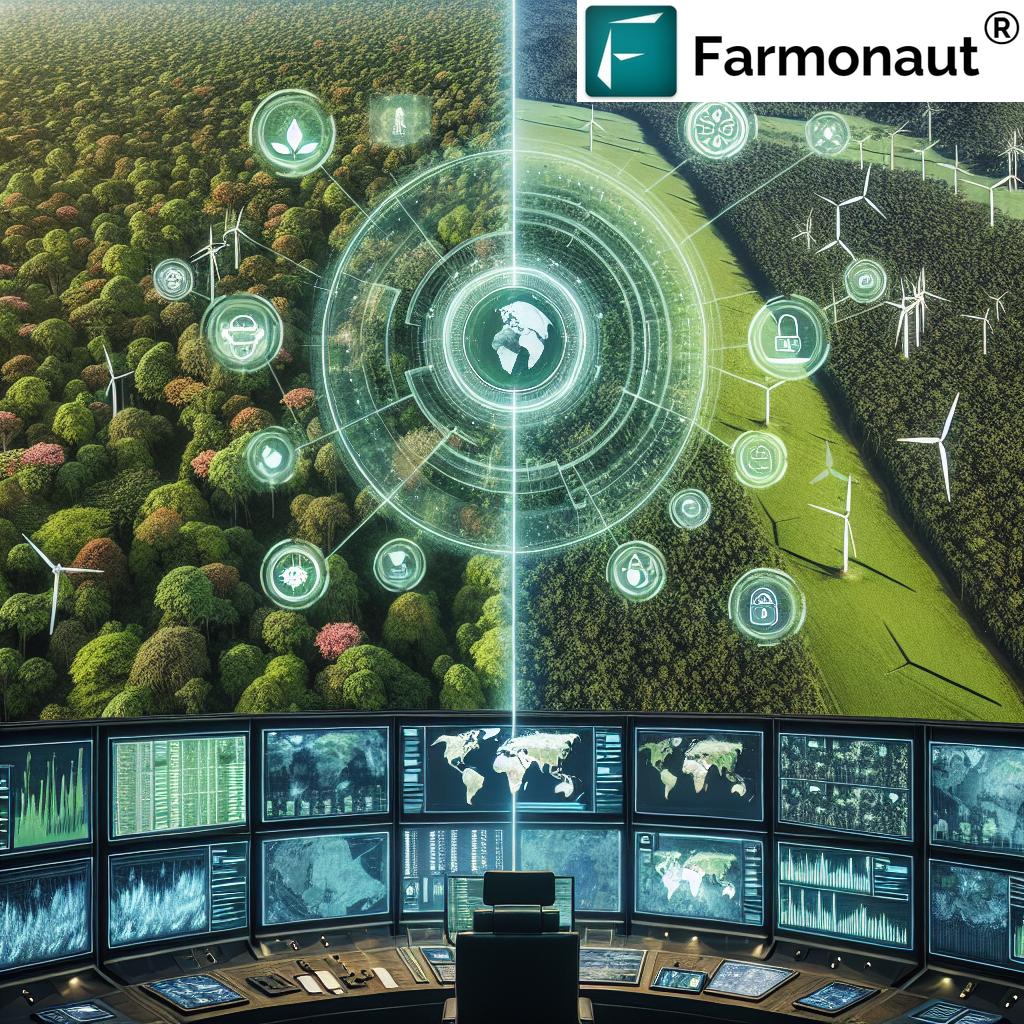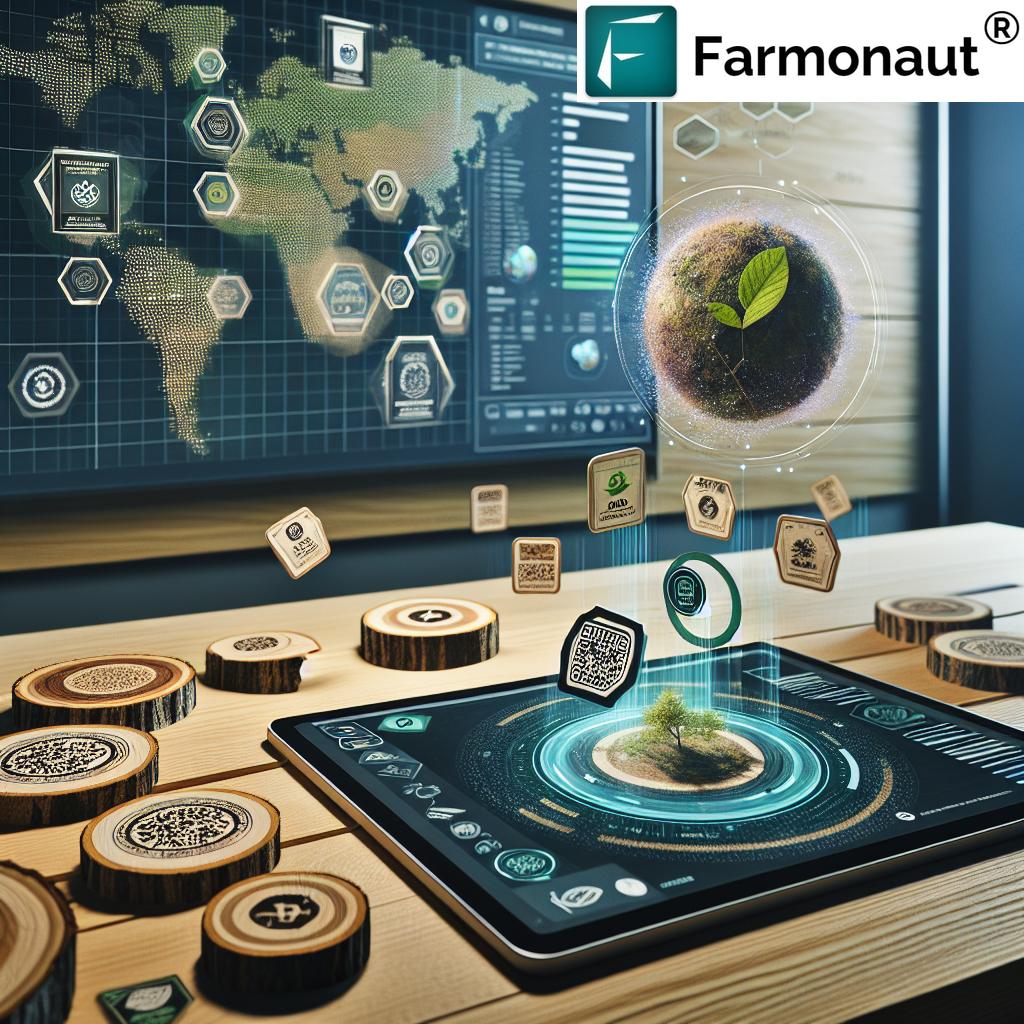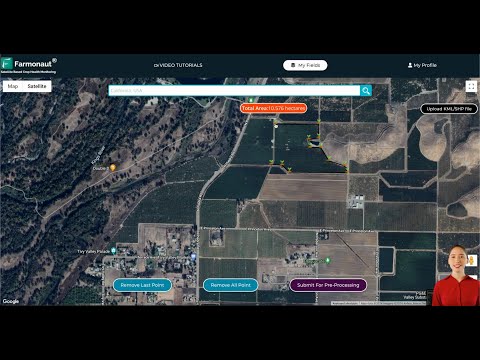Revolutionizing Sustainable Forestry: How Satellite Technology and Blockchain Ensure Compliance with EU Deforestation Regulation
“Satellite imagery can monitor up to 100% of forest areas, enabling real-time detection of deforestation and illegal logging activities.”

In the face of growing environmental challenges and increasingly stringent regulations, the forestry sector is undergoing a profound transformation. As we navigate the complexities of sustainable forestry practices and adapt to the new EU Deforestation Regulation, innovative technologies are emerging as powerful allies in our quest for responsible forest management. In this comprehensive exploration, we’ll delve into how cutting-edge solutions like satellite technology and blockchain are revolutionizing forest stewardship and ensuring compliance with international standards.
The Imperative of Sustainable Forestry
Forests are the lungs of our planet, playing a crucial role in climate regulation, biodiversity conservation, and the global carbon cycle. However, the pressures of deforestation and unsustainable logging practices have pushed many forest ecosystems to the brink. This crisis has prompted a global response, with the European Union taking a leading role through its ambitious Deforestation Regulation.
The EU Deforestation Regulation sets a new benchmark for environmental stewardship in global supply chains. It mandates that companies ensure their products are not linked to deforestation or forest degradation. This regulation has far-reaching implications for the forestry sector, necessitating a paradigm shift in how we manage and monitor our forest resources.
Satellite Technology: A Bird’s Eye View of Forest Health
Satellite imagery for forest monitoring has emerged as a game-changer in our ability to oversee vast tracts of forested land. This technology offers unprecedented capabilities in:
- Real-time monitoring of forest cover changes
- Detection of illegal logging activities
- Assessment of forest health and biodiversity
- Tracking of reforestation efforts
By leveraging high-resolution satellite data, forest managers and regulatory bodies can now keep a vigilant eye on forest ecosystems across the globe. This level of oversight was previously unimaginable and has dramatically enhanced our capacity to enforce sustainable forestry practices.
Blockchain: Ensuring Transparency in Supply Chains
Blockchain in supply chain traceability is revolutionizing how we track forest products from source to consumer. This distributed ledger technology offers:
- Immutable records of each transaction in the supply chain
- Enhanced transparency and accountability
- Reduced risk of fraud and illegal timber trading
- Improved consumer confidence in product origins
By implementing blockchain solutions, we can create an unbroken chain of custody for forest products, ensuring that every step of the journey is documented and verifiable. This level of transparency is crucial for compliance with the EU Deforestation Regulation and fosters trust among stakeholders.
Wood Identification Technology: The DNA of Sustainability
Wood identification technology has made significant strides in recent years, offering powerful tools to combat illegal logging and ensure the authenticity of timber products. These technologies include:
- DNA barcoding for species identification
- Chemical fingerprinting techniques
- Stable isotope analysis for origin verification
By employing these advanced identification methods, we can verify the species and origin of wood products with unprecedented accuracy. This capability is invaluable in enforcing regulations and maintaining the integrity of sustainable forestry certifications.
“The EU Deforestation Regulation affects an estimated 10-15% of global forest products trade, driving significant changes in supply chain management.”
Earth Observation: A Holistic Approach to Forest Management
Earth observation for forest health goes beyond traditional monitoring methods, providing a comprehensive view of forest ecosystems. This approach integrates various data sources, including:
- Multispectral satellite imagery
- LiDAR (Light Detection and Ranging) data
- Ground-based sensors and drones
- Climate and weather data
By synthesizing these diverse data streams, we can gain deep insights into forest dynamics, predict potential threats, and develop more effective conservation strategies. Earth observation technologies are pivotal in our efforts to maintain forest integrity and comply with stringent regulatory requirements.

Forest Management Certification: Setting the Standard
Forest management certification plays a crucial role in promoting sustainable forestry practices and ensuring compliance with international standards. Certification schemes like the Forest Stewardship Council (FSC) and Programme for the Endorsement of Forest Certification (PEFC) set rigorous criteria for responsible forest management, covering aspects such as:
- Biodiversity conservation
- Protection of high conservation value areas
- Respect for indigenous peoples’ rights
- Sustainable harvest practices
These certification systems provide a framework for implementing and verifying sustainable forestry practices, aligning closely with the objectives of the EU Deforestation Regulation.
Forest Stewardship Standards: Guiding Responsible Management
Forest stewardship standards provide a comprehensive framework for sustainable forest management. These standards encompass a wide range of criteria, including:
- Ecosystem maintenance and enhancement
- Social and economic well-being of forest communities
- Long-term economic viability of forest operations
- Compliance with legal and regulatory requirements
By adhering to these standards, forest managers can ensure that their practices align with global best practices and meet the stringent requirements of the EU Deforestation Regulation.
Deforestation-Free Supply Chains: A Collective Responsibility
Achieving deforestation-free supply chains is a complex challenge that requires collaboration across all sectors of the forestry industry. Key strategies include:
- Implementing robust traceability systems
- Engaging in sustainable sourcing practices
- Investing in reforestation and forest restoration projects
- Partnering with local communities for forest conservation
By working together to create deforestation-free supply chains, we can significantly reduce the environmental impact of the forestry sector and ensure compliance with emerging regulations.
Responsible Forest Management: Balancing Conservation and Utilization
Responsible forest management is at the heart of sustainable forestry practices. It involves a delicate balance between conservation efforts and the sustainable utilization of forest resources. Key aspects include:
- Implementing selective logging techniques
- Maintaining forest biodiversity and ecosystem services
- Engaging in active forest restoration and regeneration
- Involving local communities in forest management decisions
By adopting responsible forest management practices, we can ensure the long-term health and productivity of our forest ecosystems while meeting the growing demand for forest products.
The Role of Technology in Forest Monitoring
Advanced technologies are playing an increasingly vital role in forest monitoring and management. Some key technologies include:
- Satellite-based monitoring systems: Providing real-time data on forest cover changes and potential threats.
- AI and machine learning algorithms: Analyzing vast amounts of satellite imagery to detect patterns and anomalies.
- Drones and LiDAR technology: Offering high-resolution mapping of forest structures and biodiversity.
- Mobile apps and cloud-based platforms: Enabling field data collection and real-time reporting of forest conditions.
These technologies are enhancing our ability to monitor and manage forests at unprecedented scales and levels of detail.
Blockchain and Supply Chain Transparency
Blockchain technology is revolutionizing supply chain management in the forestry sector. Key benefits include:
- Enhanced traceability of forest products from source to consumer
- Improved transparency and accountability in supply chains
- Reduced risk of fraud and illegal timber trading
- Increased consumer confidence in product origins and sustainability claims
By implementing blockchain solutions, we can create an immutable record of each transaction in the forest product supply chain, ensuring compliance with regulations and fostering trust among stakeholders.
Comparison of Forest Monitoring Technologies
| Technology Type | Primary Function | Key Benefits | Challenges | EU Regulation Compliance Score (1-5) |
|---|---|---|---|---|
| High-Resolution Satellite Imagery | Forest Cover Monitoring | Real-time monitoring, wide coverage | Cloud cover interference, data interpretation | 5 |
| LiDAR Forest Mapping | 3D Forest Structure Analysis | Detailed forest structure data, biomass estimation | High cost, limited coverage | 4 |
| Blockchain-based Supply Chain Tracking | Supply Chain Traceability | Transparency, fraud reduction | Implementation complexity, industry adoption | 5 |
| DNA-based Wood Identification | Species Verification | Accurate species identification, origin tracing | Cost, specialized lab requirements | 4 |
| AI-powered Deforestation Detection | Automated Change Detection | Rapid analysis, pattern recognition | Algorithm training, false positives | 4 |
The Future of Sustainable Forestry
As we look to the future of sustainable forestry, several key trends and developments are shaping the industry:
- Increased integration of AI and machine learning in forest management
- Development of more sophisticated remote sensing technologies
- Greater emphasis on community-based forest management approaches
- Growing adoption of blockchain and other traceability technologies
- Expansion of carbon credit markets for forest conservation
These advancements promise to further enhance our ability to manage forests sustainably and meet the challenges posed by climate change and increasing global demand for forest products.
Collaboration for Forest Conservation
Effective forest conservation requires collaboration among various stakeholders, including:
- Government agencies and policymakers
- Forest management companies and timber producers
- Environmental NGOs and research institutions
- Local communities and indigenous peoples
- Technology providers and innovators
By fostering partnerships and knowledge sharing among these groups, we can develop more holistic and effective approaches to sustainable forestry and ensure compliance with regulations like the EU Deforestation Regulation.
Conclusion: A Sustainable Future for Our Forests
As we navigate the complexities of sustainable forestry in the 21st century, the integration of advanced technologies like satellite imagery, blockchain, and AI is proving essential. These tools not only enhance our ability to monitor and manage forests but also ensure compliance with stringent regulations like the EU Deforestation Regulation.
By embracing these innovations and fostering collaboration across the industry, we can create a future where forests thrive, biodiversity is protected, and the global demand for forest products is met sustainably. The journey towards truly sustainable forestry is ongoing, but with continued innovation and commitment, we are well on our way to ensuring the health and vitality of our world’s forests for generations to come.
FAQs
- What is the EU Deforestation Regulation?
The EU Deforestation Regulation is a set of rules aimed at preventing products linked to deforestation from entering the EU market. It requires companies to conduct due diligence to ensure their supply chains are deforestation-free. - How does satellite technology help in forest monitoring?
Satellite technology provides real-time, high-resolution imagery of forest areas, allowing for the detection of deforestation, illegal logging, and changes in forest health over time. - What role does blockchain play in sustainable forestry?
Blockchain technology enhances supply chain transparency by creating an immutable record of each transaction, helping to trace forest products from source to consumer and reduce the risk of illegal timber trading. - What are forest stewardship standards?
Forest stewardship standards are comprehensive guidelines for sustainable forest management, covering aspects such as ecosystem maintenance, social responsibility, and economic viability. - How can businesses ensure compliance with the EU Deforestation Regulation?
Businesses can ensure compliance by implementing robust traceability systems, adopting sustainable sourcing practices, and leveraging technologies like satellite monitoring and blockchain for supply chain transparency.
For those interested in leveraging cutting-edge technology for sustainable agriculture and forestry management, Farmonaut offers innovative solutions. Explore our offerings:

Mobile Apps:





